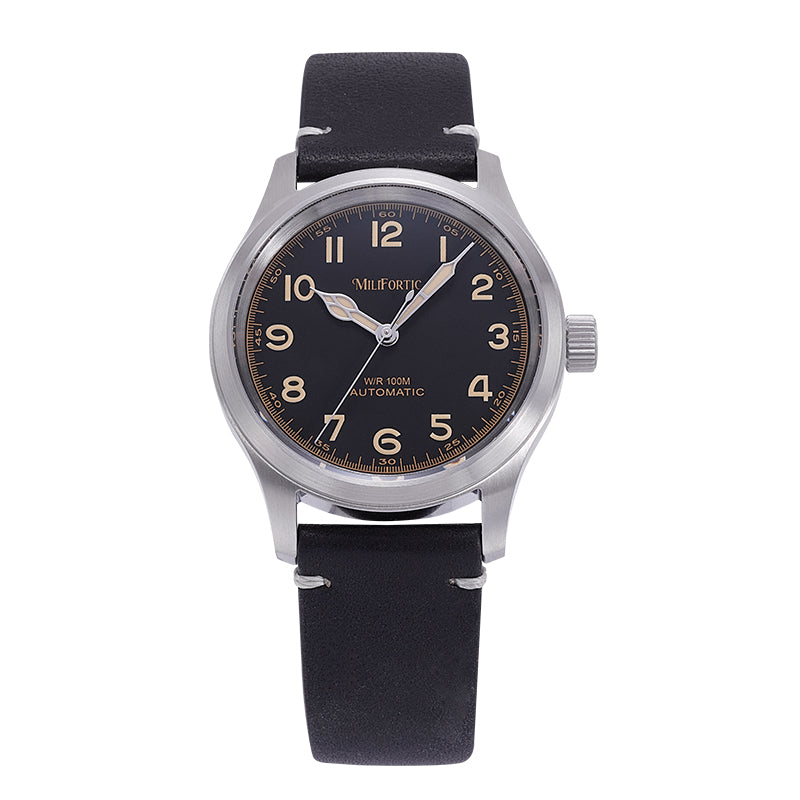
Most people love the charm of a mechanical or automatic watch — the craftsmanship, the ticking hands, the sense of tradition.
But many new owners still wonder: How exactly do you wind a watch the right way?
This guide walks you through everything you need to know — from understanding your watch type to winding it safely and keeping it running smoothly for years to come.
Understand Your Watch Type
Before winding, it’s important to know which kind of watch you own.
l Manual watches (hand-wound mechanical): These rely entirely on you to wind them. You’ll need to turn the crown regularly to keep the mainspring tight and the movement running.
l Automatic watches: These contain a rotor that winds the watch as you move your wrist. However, if you don’t wear the watch often, it may still need manual winding.
l Automatic watches with date/day function: These watches include extra crown positions for adjusting the calendar. Be mindful of these when winding or setting the time.
Understanding Crown Positions
Your watch’s crown (the small knob on the side) controls several functions. Different watches have different crown setups:
l Two-position crown:
1. Winding position
2. Time-setting position
l Three-position crown (common in watches with a date/day display):
1. Winding position
2. Date or day adjustment
3. Time-setting position
If you are unsure which setting is responsible for winding, gently pull the crown to test each setting; do not pull too hard. Additionally, for watches with a date window, do not adjust the date between 8 PM and 4 AM, as the date display function is active during this time, and doing so may damage the gears.
Signs That Your Watch Needs Winding
Even the best watches require regular servicing. When the following conditions occur during your first service, it's time to wind your watch:
1. The watch stops completely.
2. The second hand moves erratically or stops – this indicates insufficient power reserve.
Paying attention to these early signs and winding your watch promptly helps maintain its accuracy and reduces unnecessary wear on the movement.
How Winding Powers a Watch
Every mechanical watch — whether manual or automatic — is powered by a mainspring, a tightly coiled strip of metal that stores energy.
When you wind the crown, you’re actually tightening this mainspring.
As the spring gradually unwinds, it releases stored energy through a series of gears, transferring it to the escapement and balance wheel, which regulate the movement of the hands.
Automatic watches use a rotor that spins with wrist movement, winding the mainspring automatically. Manual watches require you to wind them directly through the crown.
How to Wind a Manual-Wound Watch
1. Locate the winding position of the crown. On most watches, this is the first position when the crown is pulled out. When you rotate the crown, you may hear or feel a slight "click," indicating the watch is winding.
2. Rotate the crown clockwise (upwards) about 20-30 times until you feel slight resistance.
3. Do not overwind—stop rotating when you feel the crown tighten slightly.
4. Some watches can be wound counter-clockwise, but frequent counter-clockwise winding will gradually wear down the ratchet mechanism; it's best to avoid this.
After winding, always push the crown fully back in. If the crown is not fully pushed in, water or moisture may enter the case, affecting the movement's water resistance.
How to Wind an Automatic Watch
Automatic watches wind automatically when you are active, but if you haven't worn them for a while, they may need manual winding.
1. Locate the crown and place it in the winding position.
2. Rotate the crown clockwise 30-40 times to fully wind the mainspring.
3. Gently shake the watch once or twice to start the rotor spinning.
Even if you wear an automatic watch every day, it may always remain fully wound. However, if you spend most of your day sitting at a desk, or if the strap becomes loose while wearing it, it may still lose power. Quick manual winding every few days helps keep it in optimal condition.
As with manual watches, always push the crown firmly back into place after winding to prevent water or dust from entering the movement.
How Long Will a Fully Wound Watch Run?
Different movements have different power reserves — that’s the total time your watch can run once fully wound.
As a rule of thumb: if you leave your watch for a weekend without wearing it, it might stop and that’s completely normal.
Tips for Maintaining Your Watch
1. Wind the watch regularly to ensure even distribution of lubricating oil.
2. Keep the watch clean and dry; wipe the crown area after winding.
3. Avoid strong magnetic fields or extreme temperatures. Large kitchen appliances can magnetize the watch, causing it to run fast, but this is not a major problem and can be easily demagnetized.
Even with automatic mechanical watches, gently winding them manually every few days will keep the movement in good condition.
FAQ
Q1. How does winding make a watch run?
Winding tightens a small mainspring inside the movement. As it slowly unwinds, it releases energy that powers the gears, escapement, and hands.
Q2. Do I need to wind my automatic watch if I wear it daily?
Usually not — your wrist motion will keep it powered. But if you’re not very active, a quick manual wind can help.
Q3. Will winding change the time on my watch?
No. Winding only powers the mainspring; it doesn’t affect the timekeeping unless you accidentally pull the crown to the time-setting position.
Q4. Can I wind my watch while wearing it?
It’s better not to. Removing the watch prevents unnecessary strain on the stem and crown.



0 comments